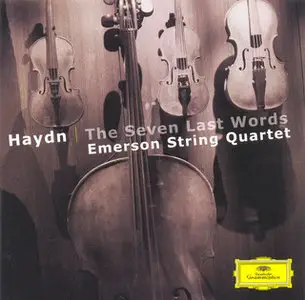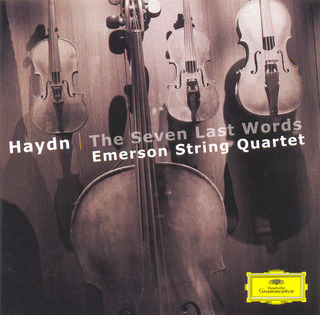Haydn: The Seven Last Words
Deutsche Grammophon | 9 mars 2004 | Classical | APE+CUE | 3% Recovery | 247 MB | Covers+Booklet | 69'03"
In 1785, the Cathedral of Cádiz commissioned Haydn to write seven orchestral interludes, to be performed during Holy Week services between the bishop's recitation of Jesus' seven last words, plus an introduction and an epilogue depicting the earthquake after His death. Though Haydn later complained about the difficulty of composing eight consecutive slow movements that would not "fatigue the listener," but "produce the deepest impression…in his soul," he succeeded magnificently. The work is surely one of his great masterpieces. Originally scored for full orchestra, he arranged it for string quartet (the most familiar version), for piano, and subsequently also for soloists, chorus and orchestra on a text by Baron van Swieten. This recording, part of the Emerson's Haydn Project, is wonderful. Though the texture is full and often contrapuntal, the first violin generally carries the melody. As always, the Emerson's violinists share the lead. Their tone, while sometimes perhaps too luxurious, is beautiful, and the collective sound is warm, pure and transparent. With inmost expressiveness, they evoke the work's human agony in all its pleading, despair and resignation, as well as its serene promise of heaven. Inveterate innovators, they have made numerous textual changes, incorporating elements of the orchestral version to enhance sonority and voicing; they even include an all-wind movement that Haydn added to his choral version in their own transcription. Though Haydn intended the music to express the text by purely instrumental means, the Emerson's suggestion that the main theme of each movement is a setting of the salient "word" or sentence (in Latin, the language of the Catholic church service) is intriguing. Despite Haydn's misgivings, the performance easily sustains interest through eight (here nine) slow movements, and though one misses the original's trumpets and kettledrums, the "Earthquake" is very effective. –Edith Eisler
1. Introduzione (I) : Maestoso Ed Adagio
2. Sonata 1 : Largo
3. Sonata 2 : Grave E Cantabile
4. Sonata 3 : Grave
5. Sonata 4 : Largo
6. Introduzione (Il) : Largo E Cantabile
7. Sonata 5 : Adagio
8. Sonata 6 : Lento
9. Sonata 7 : Largo
10. Il Terremoto : Presto E Con Tutta La Forza (Le Tremblement De Terre)
Part 1 | Part 2 | Part 3
no mirror please !
o0°All Our Uploads°0o
http://rapidshare.com/files/141777870/TA20.rar
Download-Open-Enjoy
no mirror please !
o0°All Our Uploads°0o
http://rapidshare.com/files/141777870/TA20.rar
Download-Open-Enjoy



